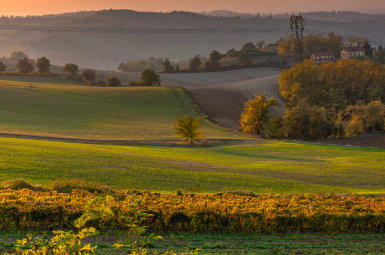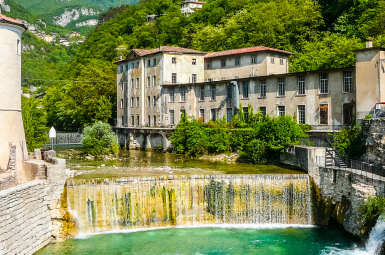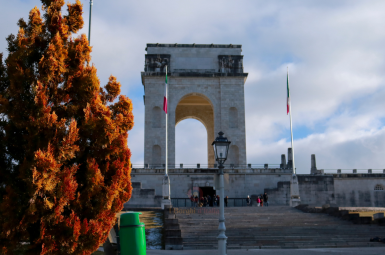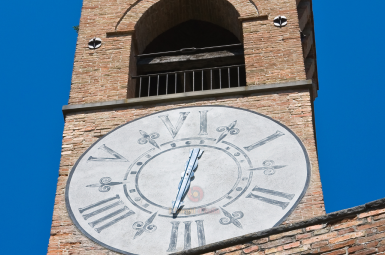
Castelli
Il Borgo di Castelli
Castelli: Dove l’Arte Emerge dalla Terra e i Colori Sfidano il Gran Sasso
Castelli (TE) non è solo uno dei “Borghi più Belli d’Italia”; è la capitale indiscussa della ceramica in Abruzzo e nel mondo. Arroccato sulle pendici sud-orientali del Gran Sasso, questo piccolo paese vive e respira l’arte della maiolica, trasformando l’argilla grezza in capolavori che hanno ornato le tavole e i palazzi di tutta Europa. Qui, la bellezza non è data solo dal maestoso panorama montano, ma è forgiata dalle mani sapienti degli artigiani, in una tradizione che è Patrimonio vivente.La Maiolica: L’Anima Istriata di Castelli
Il cuore pulsante di Castelli è la sua secolare arte della ceramica, una storia di maestria che affonda le radici nel Rinascimento.- Fama Internazionale: La maiolica di Castelli è rinomata per la sua eleganza, i colori vivaci e l’abilità narrativa delle sue decorazioni, in particolare lo stile “istoriato” che raffigura scene mitologiche, storiche o bibliche. Botteghe storiche come quelle dei Grue e dei Gentili hanno elevato l’artigianato a vera e propria arte pittorica.
- La “Cappella Sistina” della Maiolica: Il vero tesoro del borgo è il soffitto della Chiesa di San Donato. Non è affrescato, ma interamente ricoperto da un spettacolare manto di migliaia di mattonelle in maiolica policroma del Cinquecento. Un’opera unica che ha valso alla chiesa l’appellativo suggestivo di “Cappella Sistina della Maiolica”.
- Un Mestiere Vivo: Ancora oggi, decine di botteghe artigiane mantengono viva la fiamma di questa tradizione, offrendo la possibilità di ammirare gli artisti all’opera. La presenza del prestigioso Liceo Artistico “F. A. Grue” garantisce che la conoscenza e la tecnica si tramandino alle nuove generazioni.
L’Architettura del Borgo: L’Impronta del Tempo
Nonostante l’attenzione sia tutta sull’arte, il borgo offre scorci tipici e un’atmosfera montana affascinante.- Il Museo delle Ceramiche: Punto di riferimento per comprendere l’evoluzione stilistica e tecnica della produzione locale, il museo espone pezzi di valore inestimabile che testimoniano la grandezza artistica raggiunta nei secoli, dai “bianchi” seicenteschi ai paesaggi settecenteschi.
- Il Contesto Naturale: Castelli si trova incastonato nella Valle Siciliana, dominata dalle pareti imponenti del Monte Camicia. Questa posizione non è casuale: è qui che si trovavano le materie prime essenziali: l’argilla e il legname per i forni.
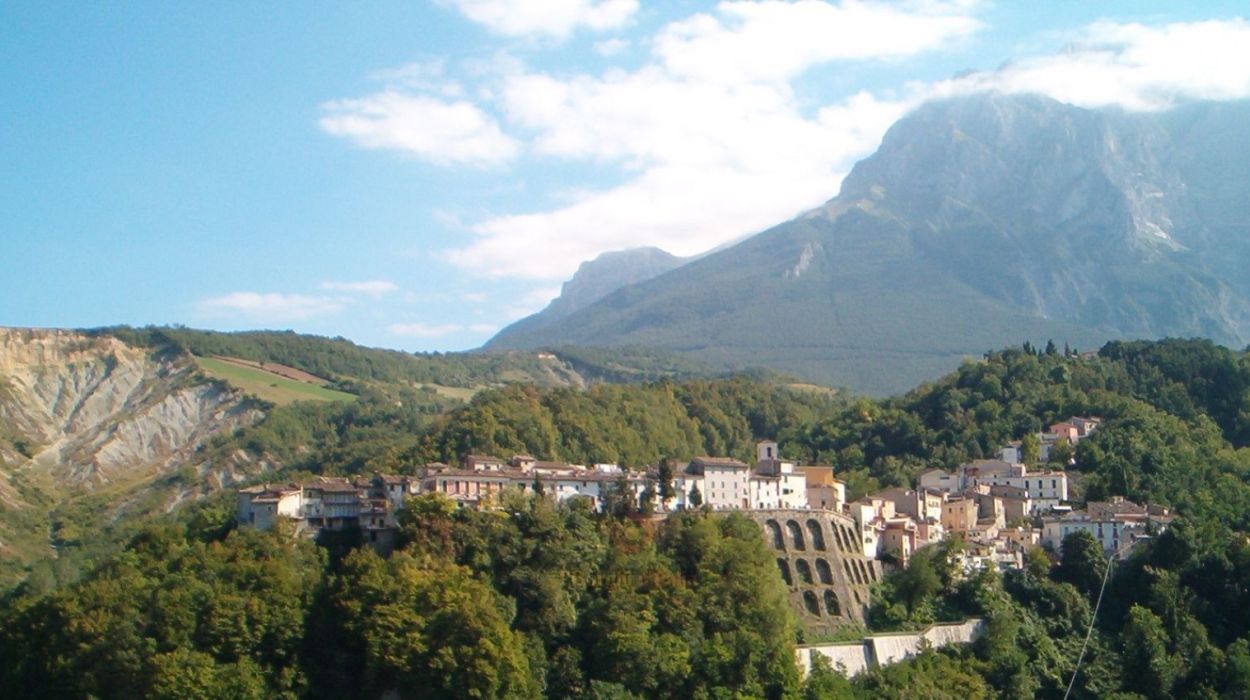
Il Borgo d’Italia
tutto da scoprire ed esplorare
Monumenti
Castelli: Dove l’Arte Eterna Incontra la Storia
Castelli non è semplicemente un borgo ai piedi del Gran Sasso; è un palcoscenico a cielo aperto dove la storia millenaria si fonde con la maestria artigiana. Qui, ogni monumento celebra l’arte che ha reso celebre questo luogo nel mondo: la Ceramica. Non aspettatevi fortezze imponenti, ma tesori di ineguagliabile bellezza, dove il cotto e lo smalto raccontano secoli di eccellenza.
1. La “Cappella Sistina della Maiolica”: La Chiesa di San Donato
Questo è senza dubbio il monumento simbolo e l’epicentro dell’arte castellana. Appena fuori dal centro abitato, in una serena contrada di campagna, sorge un edificio dall’esterno umile, ma che custodisce una meraviglia assoluta:
- Il Soffitto Maiolicato: Un capolavoro che il critico Carlo Levi definì la “Cappella Sistina della maiolica”. Oltre ottocento mattonelle policrome, realizzate tra il 1615 e il 1617, rivestono interamente la volta.
- Un Catalogo d’Arte: Ogni formella è un’opera unica, un microcosmo di colori (giallo, verde, blu, arancio) che raffigura simboli araldici, animali fantastici, figure umane, paesaggi e iscrizioni. È una narrazione visiva sfolgorante che testimonia il culmine artistico delle botteghe ceramiche dell’epoca, come quella della famiglia Pompei. Un’esperienza che richiede di stare con il naso all’insù, ammirando un unicum assoluto nel panorama artistico italiano.
2. Il Tempio della Memoria: Il Museo delle Ceramiche
Per comprendere appieno il significato del soffitto di San Donato e l’evoluzione di quest’arte, una tappa fondamentale è il Museo delle Ceramiche, ospitato nel Chiostro dell’ex Convento dei Francescani (o, in sede provvisoria, nel Palazzo Municipale dell’Artigianato, a seconda della riapertura post-sisma).
- La Collezione dei Maestri: Il museo è una raccolta essenziale di opere che spaziano dall’Alto Medioevo ai giorni nostri, con pezzi di inestimabile valore realizzati dalle grandi dinastie ceramiste locali: i Grue, i Gentili, i Cappelletti e i Fuina.
- Tesori Aulici: Qui potrete ammirare i prestigiosi piatti da pompa con stemmi nobiliari, le famose turchine rinascimentali, e le raffinate scene dell’Istoriato barocco che hanno fatto conoscere Castelli nei musei più importanti del mondo, dal Louvre al Metropolitan Museum di New York.
3. I Punti di Fede e Tradizione
Il fascino del borgo si completa con le architetture religiose che lo animano, in particolare:
- La Chiesa Parrocchiale di San Giovanni Battista: Affacciata su Piazza Roma, questa chiesa del XVI secolo, dall’aspetto tardo rinascimentale, conserva al suo interno opere di pregio e rappresenta il cuore della vita religiosa del paese.
- Il Liceo Artistico Statale “F. A. Grue”: Storico istituto che ha mantenuto viva la tradizione ceramica. Qui è stato realizzato il Presepe Monumentale che fu esposto in Piazza San Pietro a Roma, un’opera corale che dimostra come l’antica arte sia ancora oggi fonte di creatività e maestria.
A Castelli, ogni passo è un viaggio tra le radici dell’artigianato e la magnificenza dei suoi colori: non una semplice visita, ma un’immersione totale nell’arte della maiolica.
Curiosità
Castelli: Dove l’Argilla Diventa Leggenda ai Piedi del Gran Sasso
Castelli, incastonato nello scenario maestoso del Parco Nazionale del Gran Sasso e Monti della Laga, non è un borgo abruzzese come gli altri. È una fucina millenaria di bellezza, un luogo dove la terra, lavorata da mani sapienti, ha dato origine a un’arte che ha conquistato le corti d’Europa.
Se visiti questo comune, annoverato tra “I Borghi più Belli d’Italia”, preparati a scoprire delle vere e proprie meraviglie, alcune nascoste, altre monumentali.
1. La “Cappella Sistina della Maiolica”
L’attrazione più stupefacente di Castelli è nascosta in una chiesa di campagna, dall’aspetto esterno umile: la Chiesa di San Donato.
- Il Soffitto Segreto: Appena varchi la soglia, rimani abbagliato dal suo tesoro: un soffitto interamente rivestito da oltre 800 mattonelle in maiolica, realizzate tra il 1615 e il 1617. Ogni mattonella è un piccolo capolavoro, decorato con figure religiose, geometriche, floreali e stemmi nobiliari.
- Perché è Famosa: È questo straordinario lavoro, per la sua unicità e magnificenza, che ha fatto guadagnare a San Donato l’appellativo di “Cappella Sistina della Maiolica” – un titolo che rende onore al genio dei maestri ceramisti castellani.
2. Il Presepe che Ha Viaggiato nel Mondo
Pochi sanno che un capolavoro di Castelli è stato esposto nel cuore della cristianità.
- L’Opera Monumentale: Il borgo è la casa del Presepe Monumentale realizzato dagli studenti e dagli insegnanti del Liceo Artistico Statale “F.A. Grue” tra il 1965 e il 1975. Non è un presepe tradizionale: è composto da 54 statue in ceramica a grandezza quasi naturale, che uniscono la tecnica antica con la sensibilità dell’arte contemporanea.
- La Tappa in Piazza San Pietro: Questa imponente opera corale è stata selezionata ed esposta in Piazza San Pietro in Vaticano a Natale, diventando un simbolo di rinascita e della maestria ceramica abruzzese conosciuta in tutto il mondo.
3. I Segreti della Pentacromia Castellana
La maiolica di Castelli è inconfondibile grazie a una precisa e limitata palette cromatica, detta Pentacromia (cinque colori):
- I Colori della Terra: Gli artigiani per secoli hanno lavorato con una gamma di smalti derivati da ossidi minerali, ottenendo Blu cobalto, Giallo antimonio, Arancio (o terra d’ombra), Verde ramina e Bruno manganese.
- L’Assenza e la Novità: Curiosamente, il rosso era assente da questa tavolozza per la sua difficoltà di cottura. Fu introdotto solo molto tardi (alla fine del ‘700) da artisti come Gesualdo Fuina, arricchendo la tradizione ma non cancellando la purezza della pentacromia originale.
Castelli è quindi il luogo dove l’arte non è confinata nei musei, ma vive nell’architettura, nelle tradizioni e nelle botteghe, in attesa di svelare i suoi segreti a chi sa guardare oltre la superficie.
Personaggi
Le Mente e le Mani che Fecero di Castelli una Leggenda: I Maestri della Maiolica
Castelli non ha bisogno di eroi di guerra o statisti per brillare. La sua fama mondiale è stata forgiata nel fuoco, non nel campo di battaglia. I suoi “personaggi illustri” sono gli artisti che hanno trasformato una semplice terra argillosa in opere d’arte che oggi riposano nei musei più prestigiosi del mondo, dal Louvre al Metropolitan Museum di New York.
Questi sono i nomi che hanno scritto la storia di Castelli, non con l’inchiostro, ma con smalti e pennelli.
La Dinastia dei Grue: Il Barocco sulla Maiolica
Se Castelli è la capitale della ceramica, la Famiglia Grue ne è la stirpe reale. Attivi dal XVI al XVIII secolo, hanno definito lo stile barocco della maiolica castellana, elevando la pittura su ceramica a livelli di virtuosismo mai visti.
Carlo Antonio Grue (1655 – 1723): Il Pittore Barocco
Considerato il più grande pittore su maiolica del Barocco, Carlo Antonio è la figura centrale di questa dinastia.
- L’Innovatore: Abile nel trasformare i temi classici (mitologici e allegorici) in scene ricche di dettagli e movimento, fu il primo a dare grande risalto al “paesaggio” nella decorazione, trasformando piatti e vasi in vere e proprie tele in miniatura.
- Lo Stile: I suoi pezzi si distinguono per l’uso magistrale dei colori, l’eleganza delle composizioni e l’introduzione di nuove tonalità che diedero vita a un’arte ceramica di altissimo pregio, ambita dalle corti e dalle famiglie nobili di tutta Europa.
- L’Eredità: Suo figlio, Francesco Antonio Saverio Grue (1686-1746), ne seguì le orme, portando avanti la tradizione e consolidando ulteriormente la fama della bottega Grue, tanto da lavorare anche a Napoli.
Il Rinascimento e le Origini: Orazio Pompei e lo Stile Istoriato
Prima del Barocco dei Grue, Castelli aveva già un nome grazie ai maestri rinascimentali.
Orazio Pompei (1516 circa – 1590/96): Il Capostipite della Grandezza
Orazio Pompei è l’artista che diede il primo vero slancio all’arte castellana nel XVI secolo.
- Il Tesoro Locale: A lui viene attribuita la decorazione di parte delle prime mattonelle che rivestono la volta della Chiesa di San Donato, oggi soprannominata la “Cappella Sistina della Maiolica”. Questa impresa monumentale è la prova tangibile della sua suprema maestria.
- Fornitore per la Nobiltà: La sua bottega era celebre per la produzione del lussuoso vasellame farmaceutico, in particolare il celebre corredo Orsini-Colonna, i cui pezzi sono oggi custoditi nelle collezioni museali più importanti.
La Continuità dell’Eccellenza: Le Altre Grandi Famiglie
L’arte castellana non si limita a due nomi, ma è una ricca trama di botteghe e talenti che hanno collaborato e gareggiato per secoli.
- I Gentili (o Gentile): Insieme ai Grue, hanno dominato la scena barocca e settecentesca. Carmine Gentili (1678-1763) fu un contemporaneo di Carlo Antonio Grue e si distinse per il suo segno grafico mosso e raffinato, anch’egli tra i maestri dello stile istoriato. Le loro maioliche ornano pavimenti celebri come quello di Villa d’Este a Tivoli.
- Gesualdo Fuina (1755-1822): Esponente di un’altra importante famiglia di ceramisti, è ricordato per aver introdotto il colore rosso nella palette castellana alla fine del Settecento, rompendo la tradizionale limitazione cromatica e arricchendo ulteriormente la maiolica locale.
I veri “personaggi famosi” di Castelli sono le loro opere, le tracce indelebili di un’arte che è nata dalla montagna abruzzese per conquistare il mondo.
Ricette Tipiche
Castelli in Tavola: L’Arte Culinaria della Terra Forte
Castelli, celebre in tutto il mondo per la sua magnifica maiolica, custodisce un altro tesoro, meno visibile ma ugualmente prezioso: una cucina che parla di montagna, di ingredienti poveri trasformati in piatti ricchi di sapore e storia. La gastronomia di questo borgo teramano è un inno alla semplicità abruzzese, rustica e genuina.
Se vuoi assaporare l’anima vera di Castelli, queste sono le specialità che devi conoscere.
I Capolavori del Forno: Scarapiccia e ‘Mmazzafame
Castelli vanta due specialità da forno che incarnano perfettamente lo spirito del pane e della farina, tipiche della tradizione popolare:
1. La Scarapiccia (o Pizza)
Non è una pizza comune, ma la risposta montana alla voglia di un piatto conviviale e gustoso.
- L’Essenza: Si tratta di una sorta di focaccia bassa e croccante, cotta al forno o nel forno a legna. La ricetta base è estremamente semplice – farina, acqua, lievito e un pizzico di sale – ma la sua magia risiede nella consistenza scrocchiarella e nella sua versatilità.
- L’Abbinamento Perfetto: La Scarapiccia è spesso gustata come accompagnamento a salumi e formaggi locali, o farcita con verdure di campo o gli avanzi del giorno, trasformando la necessità in una delizia da condividere.
2. La ‘Mmazzafame (La Fritella della Sazietà)
Il nome è evocativo e quasi scherzoso: “ammazza-fame”, a indicare un cibo robusto e capace di saziare anche l’appetito più irruento.
- La Preparazione: È una fritella morbida e saporita, preparata con un impasto simile a quello del pane, ma che viene fritto in olio bollente.
- Il Gusto della Tradizione: Spesso viene arricchita con ingredienti semplici ma intensi, come patate lesse, verdure selvatiche, o piccoli pezzetti di formaggio locale che si fondono nell’impasto caldo. Un vero e proprio comfort food che riscalda nelle giornate più fresche ai piedi del Gran Sasso.
Il Dolce Simbolo: I Mostaccioli di Castelli
Anche nell’arte dolciaria, Castelli ha saputo imprimere il suo sigillo, soprattutto con i suoi inconfondibili Mostaccioli.
- Un Sapore Antico: Sono dolcetti secchi a base di mandorle tritate, arricchiti con cacao, caffè e legati con il miele o mosto cotto (da qui il nome). Sono un perfetto esempio della pasticceria da conservazione, pensata per durare nel tempo.
- La Morbidezza Speciale: I Mostaccioli di Castelli si distinguono per un impasto particolarmente aromatico e, nella versione più amata, per una consistenza che, pur essendo compatta, è sorprendentemente morbida.
Questi piatti, insieme alle grandi tradizioni della cucina teramana come le Mazzarelle (involtini di coratella d’agnello) e le Virtù (il minestrone sontuoso delle sette verdure e legumi), compongono il mosaico gastronomico di un borgo che nutre l’anima con l’arte e il corpo con i sapori schietti della montagna.
